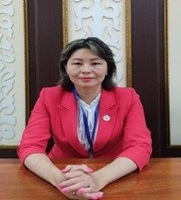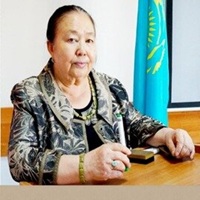Cognitive foundations of new lexical usage in modern Kazakh, Turkish and Tuvan languages
DOI:
https://doi.org/10.25178/nit.2025.2.11Keywords:
lexical usage; borrowing; concept; Kazakh language; Turkish language; Tuvan languageAbstract
The article explores the cognitive foundations of new lexical usages in contemporary Kazakh, Turkish, and Tuvan languages. The primary focus is on analyzing the influence of globalization, cultural change, and technological advancement on the formation of new lexical units and the transformation of meanings associated with existing concepts. The study addresses three key aspects: the borrowing of foreign words, their adaptation, and the creation of native equivalents to denote new concepts.
The linguistic material necessary for the research was collected from the pages of Kazakh, Turkish, and Tuvan periodical press from 2000 to 2025, including newspapers such as Egemen Qazaqstan, Ana tili, Hürriyet, Sabah, and Shyn.
The analysis of examples demonstrated that the Kazakh language is significantly influenced by a policy of language modernization aimed at preserving national identity through transliteration and morphological adaptation of borrowed words. In contrast, the Turkish language tends to favor calquing and the creation of original Turkish equivalents, reflecting a long-standing language policy directed toward the “purification” of the language from borrowings. The Tuvan language is more often characterized by hybrid forms of adaptation, where borrowings are integrated with local cultural concepts, thus enabling the preservation of regional cultural specificities in the context of globalization.
References
Aidarbek, Q. Zh. (2010) Onomasiological foundations of Kazakh terminological nomination. Almaty, Institute for the Development of the State Language. 384 p. (In Kazakh)
Aitbayev, O. (1997) The Kazakh word. Almaty, Rauan. 240 p. (In Kazakh)
Bissengali, A.Z. (2022) Processes of terminologization in Kazakh and Turkish languages (linguocultural and linguocognitive comparative analysis). Almaty: Kazakh Publishing. 164 p. (In Kazakh)
Bitkeeva, A. N. and Tsybenova, Ch. S. (2022) Chronicle of language shift in the Tuvan language in the Republic of Tuva. New Research of Tuva, no. 4, pp. 6–27. (In Russ.) DOI: https://doi.org/10.25178/nit.2022.4.1
Borgoyakova, T. G. and Guseinova, A. V. (2017) Status and functioning of Turkic languages of Southern Siberia. Abakan, Katanov Khakass State University. 136 p. (In Russ.)
Borgoyakova, T. G. and Bitkeeva, A. N. (2020) Tuvan language in legal and functional dimension. New Research of Tuva, no. 1, pp. 50–61. (In Russ.) DOI: https://doi.org/10.25178/nit.2020.1.4
Wierzbicka, A. (1997) Language, culture, cognition. Moscow, Russkie Slovari. 416 p. (In Russ.)
Gizdatov, G. G. (1997) Cognitive models in speech activity. Almaty, Gylym. 178 p. (In Russ.)
Zhamanbaeva, Q.A. (1998) Cognitive foundations of language use: emotion, symbol, linguistic consciousness. Almaty, Gylym. 140 p. (In Kazakh)
Zharkynbekova, Sh. K. (2005) Comparative linguoconceptology as a new promising direction in modern linguistics. In: Shaimerdenova, N. Zh. (ed.) The life of language and language in life: Collection of articles dedicated to the jubilee of E. D. Suleimenova. Almaty, Kazakh University. 478 p. Pp. 27–38. (In Russ.)
Zhubanov, K. (1966) Research on the Kazakh language. Almaty: Gylym. 362 p. (In Kazakh.)
Zabotkina, V. I. (1999) Cognitive-pragmatic approach to neology. In: Cognitive-pragmatic aspects of linguistic research. Ed. by V. I. Zabotkina. Kaliningrad, Kaliningrad State University. 95 p. Pp. 3–9. (In Russ.)
Kenes, B. E. and Kurmanbaiuly, Sh. (2023) The use of information technology (IT) terms in the Kazakh language. Tiltanym, no. 1(89), pp. 169–181. (In Russ.) DOI: https://doi.org/10.55491/2411-6076-2023-1-169-181
Kotelova, N. Z. (1988) Theoretical aspects of lexicographic description of neologisms. Moscow, Encyclopedia. 275 p. (In Russ.)
Kubryakova, E. S. (2001) On cognitive linguistics and semantics of the term ‘cognitive’. Vestnik VGU. Seriya: Lingvistika i mezhkulturnaya kommunikatsiya, no. 1, pp. 4–10. (In Russ.)
Qaidar, A. (1993) A new perspective on Kazakh terminology. Almaty, Rauan. 43 p. (In Kazakh)
Mankeyeva, Zh. A. (2014) Problems of Kazakh linguistics. Almaty, Abzal-Ai. 640 p. (In Kazakh.)
Martan-ool, M. B. (2014) Issues of the Tuvan language: dialectology, lexicography and sociolinguistics. Selected scientific works. Abakan, Journalist. 276 p. (In Russ.)
Oorzhak, B. Ch. (2014) Temporal system of the Tuvan language. Moscow, Languages of Slavic Cultures. 184 p. (In Russ.)
Syzdyk, R. (2009) Old and new in the Kazakh language. Almaty, Arys. 272 p. (In Kazakh.)
Teliya, V. N. (1986) Cognitive aspect of the semantics of nominative units. Moscow, Nauka. 143 p. (In Russ.)
Togoeva, S. I. (2007) Modern lexicography and new units of nomination. Moscow, Akademiya. 147 p. (In Russ.)
Ufimtseva, A. A. (1962) Study of vocabulary as a system. Moscow, Academy of Sciences of the USSR. 288 p. (In Russ.)
Tsybenova, Ch. S. (2017) Modern language situation in the Republic of Tuva: sociolinguistic aspect. Irkutsk, Ottisk. 170 p. (In Russ.)
Shansky, N. M. (2007) Lexicology of the modern Russian language. Moscow, LKI. 304 p. (In Russ.)
Dankoff, R. (1995) Armenian Loanwords in Turkish. Wiesbaden, Harrassowitz. 217 p.
Eker, S. (2007) Historical Military Terminology from the Point of View of Turkish Linguistics. Rank and Union Names in the Modern Period. Ankara, Grafiker Yayınları. 255 p. (In Turkish)
Eker, S. (2015) Modern Turkish Language. 9. Pressing. Ankara, Grafiker Yayınları. 544 p. (In Turkish)
Ercilasun, A. (2004) The Turkish Language in its Historical Flow and during the Republican Period. BAL-TAM Türklük Dergisi. Prizren. Sayı: 1 (17), pp. 11–23. (In Turkish)
Fazylzhanova, A., Kuderinova, K., Khabiyeva, A., Yali, N., Utebaeva, E. (2017) Kazakh linguistics: Problems, tendencies and prospects of development. Astra Salvensis. Review of history and culture, no. 10, pp. 251–260.
Korkmaz, Z. (2002) Turkish in mass media. In: Yesterday, today, tomorrow of Turkish. International information festival. Papers. Ankara, January 7–8, 2002 / Prepared by: H. Akbulut, S. H. Akalin, A. O. Good, T. Acar, H. Baraner. Ankara, Kültür Bakanlığı. 396 p. Pp. 45–59. (In Turkish)
Köksal, A. (2010) Let His Name Be a Computer. İstanbul, Cumhuriyet Kitapları. 504 p. (In Turkish)
Lakoff, G. and Johnson, M. (1980) Metaphors We Live By. Chicago; London, The University of Chicago Press. 242 p.
Lewis, G. L. (1999) The Turkish Language Reform: A Catastrophic Success. New York, Oxford University Press. 190 p.
Tekin, T. (2018) Turkish Languages: Introduction. Ankara, Bilgesu Yayıncılık. 224 p. (In Turkish)
Zülfikar, H. (1991) Term Problems and Ways of Making Terms. Ankara, TDK Yayınları. 256 p. (In Turkish)
Published
How to Cite
For citation:
Bissengali A. Z.-G., Burkitbayeva Sh. D., Mankeyeva Zh. A. and Kulmanov S. K. Cognitive foundations of new lexical usages in modern Kazakh, Turkish and Tuvan languages. New Research of Tuva, 2025, no. 2, pp. 200-215. (In Russ.). DOI: https://doi.org/10.25178/nit.2025.2.11
Issue
Section

This work is licensed under a Creative Commons Attribution-NonCommercial 4.0 International License.

Author(s) license holder(s) grant rights for their work to the journal (grantee of a license) under the simple non-exclusive open license in accordance with Art. 1286.1 «Open license for a research work, work of literature or fine arts», Civil Code of the Russian Federation.
New Research of Tuva publishes articles under the Creative Commons Attribution-NonCommercial license (CC BY-NC).
Since it is an open license, author(s) reserve the right to upload the article to their institutional repository, submit it to another journal (if it allows republications), or republish it on their own website (in full, or in part).
However, several conditions apply here:
a) The republished version must always contain the name(s) and affiliation(s) of the author(s), the original title and the hyperlink to the original version on the New Research of Tuva website;
b) It must be in open access, free of charge, and no category of readers must be in any way whatsoever advantaged over general readership.
c) should the contribution be submitted elsewhere by its author(s) without substantial modification (30% or more of original text unchanged), the body of the article should contain a disclaimer that the original version was published in New Research of Tuva (with a link to the respective page)
The CC-BY-NC is a non-revocable license which applies worldwide and lasts for the duration of the work’s copyright.












